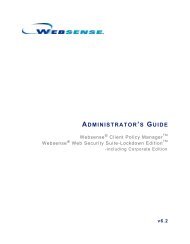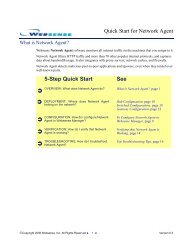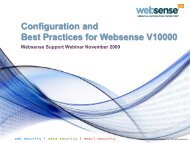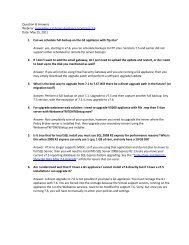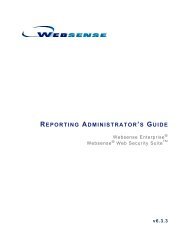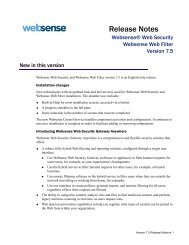You also want an ePaper? Increase the reach of your titles
YUMPU automatically turns print PDFs into web optimized ePapers that Google loves.
CHAPTER 4Managing Log ServerLog Server is a separate service that reporting uses to receive Internet accessinformation from <strong>Websense</strong>. Log Server saves this information to a log cachefile (logx.tmp, where x is a number). Log cache files (also called log files)act as temporary storage for data accumulated by Log Server. Log Serverstores information in a log file until the file reaches the specified capacity, or acertain amount of time has passed. After reaching either limit, Log Serversaves the file and creates a new one. You can select a capacity and timeinterval on the Settings tab in the Log Server Configuration window.Log Server will cache log records until CPU time becomes available. LogServer then reads the oldest log file and sends its information to the LogDatabase.Log Server configurationDuring installation of Log Server, establish settings that define how LogServer should interact with <strong>Websense</strong> Express and the Log Database. The LogServer Configuration window allows you to modify those settings.IMPORTANTAfter making changes on 1 or more of the Log Server Configurationtabs:• Click Apply.• Stop and restart Log Server for the changes to take effect.1. Go to Launch Log Server Config in the Actions menu in <strong>Websense</strong>Manager. The Log Server Configuration window opens and contains tabswith options.2. Select a tab to display its options and make any changes. See online Helpfor details about the settings in each tab.<strong>Websense</strong> Express User <strong>Guide</strong> 93





